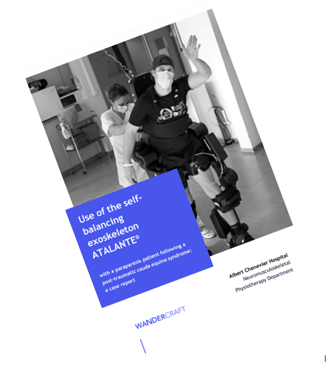Athletic use of the self-balancing exoskeleton Atalante
Management of a paraparesis patient following a post-traumatic cauda equina syndrome
Follow up the treatment of a 30 year old athletic patient, and discover the quantitative and qualitative rehabilitative contributions provided by Atalante in terms of the intensity and versatility of the exercises proposed, with a strong emphasis on the sports activities made possible.

You will read in this study
> Initial assessment
> Physiotherapy program
> Characteristics of Atalante sessions
> Exercises performed with Atalante exoskeleton




Rebecca SAUVAGNAC
Physiatrist and clinical director at Wandercraft
"Gait training exoskeletons, such as Atalante X, are innovative tools in the management of people with walking impairment. They maximize rehabilitation training; in the hope of improving recovery after a neurological lesion; and in preventing the appearance of complications secondary to prolonged immobilization. Clinical studies comparing Atalante to conventional rehabilitation are undergoing to prove the potential clinical benefits.
In the long term and taking into consideration the current progress in terms of the management of Neurological lesions, particularly with the appearance of new treatments that give hope of repairing or supplementing the nervous system, exoskeletons have their place in maintaining the body in a state of general good health for people in wheelchairs."
